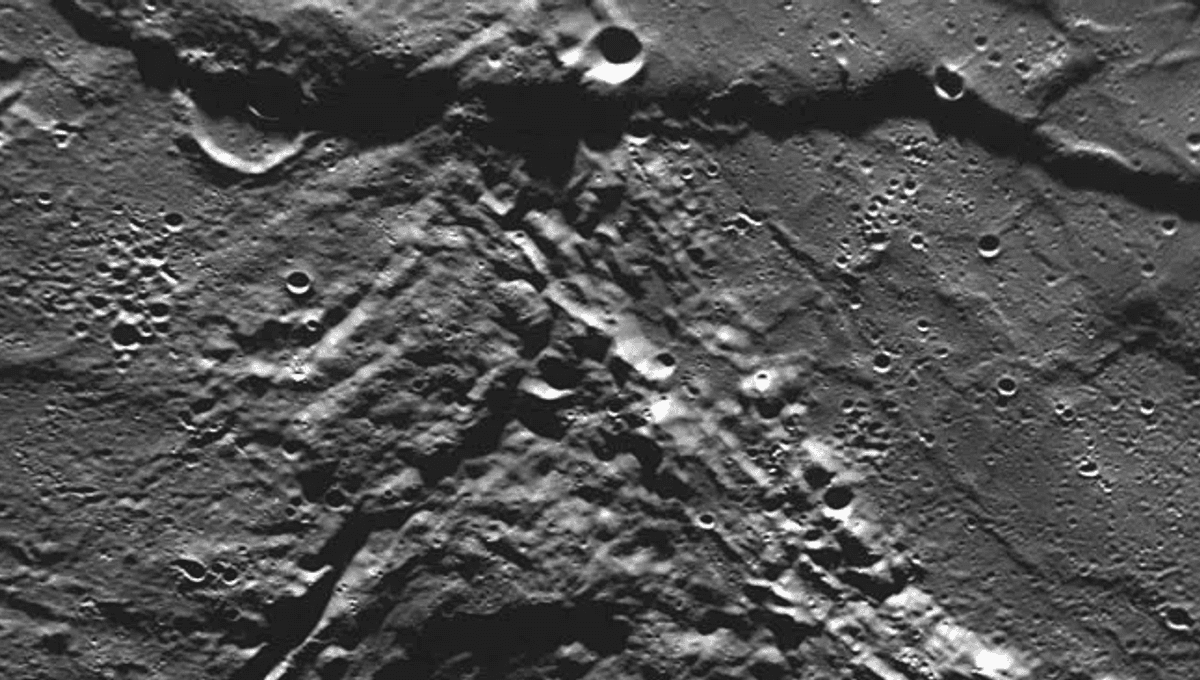Mercury is an odd little planet. The closest world to the Sun has some extreme surface structures, steep hills and cliffs, which have long been suspected to be the effect of the planet’s interior cooling and shrinking. However, certain features cannot be explained by shrinking alone, and a team of researchers suspects that the Sun’s gravitational pull is likely to blame.
Mercury is locked in a 3:2 spin-orbit resonance. This means that it completes three days (it rotates three times around its axis) for every two Mercury years (two orbits around the Sun). Its orbit is also a lot more eccentric than our own. While Earth's orbit is almost a circle, Mercury's is properly egg-shaped, so its distance from the Sun is quite variable. These changing forces can affect the crust, and including them in a model of the possible evolution of Mercury over its 4.5 billion years of existence suggests that the planet's surface might be shaped by the tidal forces from the gravity of the Sun. "These orbital characteristics create tidal stresses that may leave a mark on the planet’s surface. We can see tectonic patterns on Mercury that suggest more is going on than just global cooling and contraction. Our goal was to investigate how tidal forces contribute to shaping Mercury’s crust," Dr Liliane Burkhard, first author of the study, said in a statement. "By changing parameters such as rotational speed and orbital eccentricity, we were able to simulate and deduce how Mercury's tectonics might have evolved." The tidal forces alone are not enough to form those geological features, but the model suggests that the direction peculiarities that cannot be explained by the shrinking alone can be solved with the impact of the Sun’s gravity. "Tidal stresses have been largely overlooked until now, as they were considered to be too small to play a significant role. Our results show that while the magnitude of these stresses is not sufficient to generate faulting alone, the direction of the tidally induced shear stresses is consistent with the observed orientations of fault-slip patterns on Mercury’s surface," explained Burkhard. "This suggests that tidal stresses may have influenced the development and shear orientation of tectonic features over long geologic time periods. This is an aspect of Mercury's evolution that has not yet been explored." Burkhard and fellow author Professor Nicolas Thomas hope to find out more using data from BepiColombo, a joint Japanese and European mission that will reach Mercury next year, and bring new insights into the geography and geology of the planet. The details provided by the spacecraft might just help us clarify how these cracks in Mercury came to be. The study is published in the Journal of Geophysical Research: Planets.





